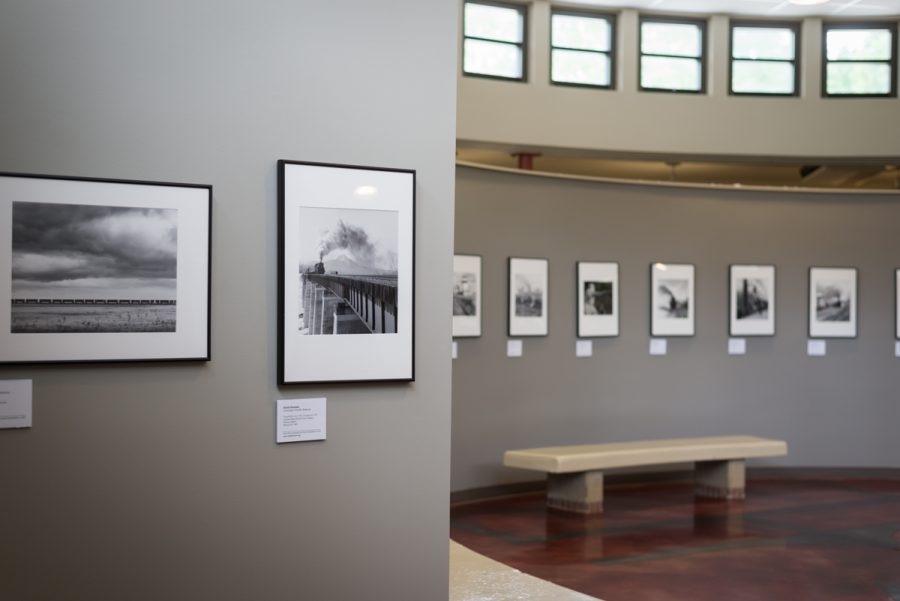There are people waiting on a smoky platform, just a handful of them. There’s a train that’s pulled up and a conductor near one of the cabin doors. It’s a scene from a past time and place, 1964 in Scranton, Pennsylvania to be exact. It’s Katherine Edge’s favorite photograph in the exhibit.
“I feel like I could be a movie scene from the 1950s and at any moment Marilyn Monroe’s going to step out and say a few lines and get on the train,” said Edge, the Director of the Mildred Westervelt Warner Transportation Museum.
“Requiem for Steam: The Railroad Photographs of David Plowden” is on display at the Warner Transportation Museum until June 24. It features 30 photographs Plowden took in the 1950s and 60s, chronicling the end of the steam locomotive era.
“At the end of the steam era before diesel trains started becoming a part of the norm, this is the way that they could document steam trains leaving the scene,” said James Scott, the museum’s education and exhibit assistant. “It’s a marker in history and I think that’s a good reason for people to come and see it. You’re never going to see a train like this on railroads riding past your house.”
The photos were mostly taken in the Northeastern United States, but there are also a couple from the Midwest and Canada. Scott, who’s from the Northeast, said the exhibit reminds of him of home.
“It kind of makes me feel like I was at home even though I’ve never seen these trains before, just knowing that they’re in the region,” he said. “I could have potentially gone by that sometime, never knowing that that’s what that was.”
The exhibit is on loan to the museum from the Center for Railroad Photography and Art in Madison, Wisconsin. According to their website, railphoto-art.org, the exhibit has previously been displayed in New Jersey, Texas, California and Wisconsin.
It was taking pictures of trains that led Plowden to become a professional photographer, according to the exhibit and the center’s description of Plowden.
“In 1959-60, he pursued the end of steam on the Canadian Pacific Railway, having been granted open access to the entire system,” the center’s website said. “His devotion took him to the most far-flung reaches of the CPR’s Atlantic Region where he quite literally bore witness to some of the last breaths of steam on North American mainlines.”
For Edge, it’s Plowden’s love of trains and his photographic abilities that give this exhibit a special perspective. Plowden didn’t just capture pictures of trains, she said, but also the life surrounding them.
“It’s the storage buildings for the items that the trains are going to carry, it’s the engineers that work on them, it’s the ticket offices that organize them, it’s the big switchyards in New Jersey with trains coming and going all the time,” she said. “It’s not just a physical train. It’s everything that goes with the train as well so it’s a very complete story.”
Edge and Scott got to decide the layout of the photos for their presentation of the exhibit. They spent half a day deciding what photo to put where, Edge said, making sure there weren’t similar pictures next to each other. In the end, the photo of the platform was picked to be the last photo of the exhibit.
In fact, the last three images are placed in such a way as to tell a story, Edge said. A locomotive coming towards the camera, a conductor smiling near an open cabin car door, and a train platform with people and a train waiting.
“If you look at the last three images you can almost kind of think of it as a trip,” Edge said. “If you were taking a trip, you’re on the train, you work with the conductor and he tells you ‘thank you so much for coming’ and then your very last stop is the train station to gather your bags, gather all your belongings and then head out metaphorically into the world.”







